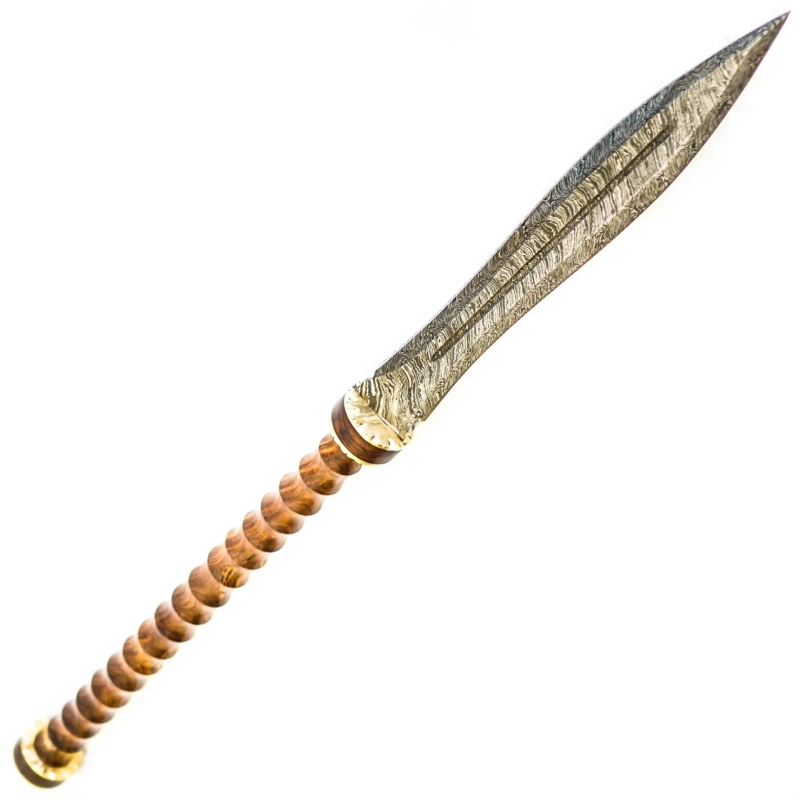Across time, the spear has played an integral part on the battlefield. Among its numerous forms, the short spear is especially worthy of mention for its unique combination of speed, handling, and adaptability. While longer spears were considered superior for range, it was the versatility of the short spear that enabled it to become a game-changing element in the warfare of ancient times.
Regardless of whether thrust upon, hurled against, or engaged in hand-to-hand combat, the short spear was a powerful weapon for fighters in numerous cultures. Its extension was far and wide—from ancient Greece and Rome to tribal Africa and medieval Europe.
The Rise of the Short Spear
The technological advancement of weapons in the ancient period was driven by the functional needs on the battlefield. The soldiers needed weapons that were easy to handle, quick to deliver, and light to carry. The short spear met all these needs.
Whereas longer polearms required soldiers to stay farther back and struggle to maneuver, the short spear allowed for battles fought in closer ranks and better maneuverability. It was generally between 4 and 6 feet long, long enough to fend off enemies yet short enough to deliver quick, accurate blows. These were critical features when speed and reaction time could be the difference between life and death.
Close-Combat Advantage
A short spear changed close-quarters fighting forever. Yes, longer spears have reach, but when things are tight or crowded, they can become a disadvantage. Soldiers using a short spear could move around easily and maintain better control of their weapon.
In hand-to-hand fighting (particularly when in narrow alleys, wooded terrain, or inside fortifications), the short spear was an advantage. Warriors could shove, thrust, parry, and when required, turn the spear into a club.
Dual Use Weapon: Thrust and Throw
The short spear stood out in battle because it served more than one purpose. Many short spears were made to be thrown as well as thrust. This made them tremendously useful for foot soldiers and hunters.
In particular, the javelin spear, a type of short spear meant for throwing, was a preferred weapon in many armies, including the Romans and Greeks. These spears were light but deadly and often used in the first wave of attack to weaken or confuse the enemy before entering melee combat.
Carrying multiple javelin spears made it possible for a soldier to attack from a distance and then switch to hand-to-hand combat with their remaining spear. This created an interesting dynamic while changing the tactics of soldiers and making them less vulnerable when charging or defending.
Lightweight and Easy to Handle
The short spear was considerably lighter than other weapons like swords and axes. This was a significant advantage when marching for days at a time during a campaign. Soldiers were typically limited to one or two weapons that had to fulfill multiple roles, and the short spear fit this role perfectly.
Additionally, the design of the short spear was simple and could be easily adapted for various weapons and cultures. Some short spears had iron tips, but some had sharpened bone or stone. Even if the material changed, the weapon's advantages remained constant.
Spear vs. Sword: A Wise Decision
While swords might occupy the spotlight more regularly, especially in historical fiction and movies, they were more prevalent. In general, spears were easier to produce, cheaper to buy, and more effective on almost every battlefield.
In fact, historical evidence reveals that more warriors went into battle with a spear than with any other weapon. The short spear combined the best of speed, power, and cost-effective design. It was an obvious choice for professional armies or local militias.
The Legacy of Short Spear
The short spear still captures the interest of historians, collectors, and martial artists. Its role in shaping warfare continues to stand the test of time. It changed the way wars were fought by giving warriors a versatile, practical, and deadly weapon that did not depend on brute strength.
Collectors at BattlingBlades.com can find historical weapons of all kinds, including expertly designed short spears and javelin spears that represent the legacy of a great weapon. These spears hold a portion of hundreds of years of craftsmanship, culture, and strategy in their small shapes.
Bottom Line
The short spear may not shine like a grand broadsword or a deadly battle axe, but it played a powerful role in ancient warfare. However, it was undoubtedly one of the most effective, deadly, and influential weapons of the past. Its lightweight design, close-combat effectiveness, and dual-purpose use as a javelin spear made it a good and trusted companion on countless battlefields.
If you want to study or own a piece of true historical history, the short spear offers more than a peek into the past. It offers the tale of warriors that changed the course of history with measured skill and strategy, with a spear in hand.



